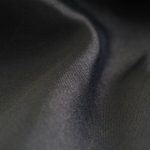Gore-Tex fabric technology was originally patented, protecting its unique waterproof and breathable membrane. Those patents, filed in the late 1960s, have since expired, letting other companies create similar waterproof breathable fabrics without licensing fees. This expiration expanded your options for high-performance outdoor gear. However, Gore-Tex continues to hold newer patents on advanced features and manufacturing processes. If you want to understand how these innovations shape market competition and future fabric developments, there’s more to explore ahead.
Table of Contents
Key Takeaways
- Gore-Tex technology originated from patented ePTFE membranes developed by Bob Gore in the late 1960s and early 1970s.
- Original Gore-Tex patents, covering waterproof and breathable membrane innovations, have expired after about 20 years.
- Current Gore-Tex products rely on newer patents for improved membranes, seam sealing, and fabric layering techniques.
- Patents protect Gore-Tex’s unique waterproof and breathable fabric features, preventing unauthorized replication during their validity.
- Expired patents allowed competitors to develop similar waterproof breathable fabrics without licensing fees, broadening market options.
Origins of Gore-Tex Fabric Technology
The origins of Gore-Tex fabric technology trace back to 1969 when Bob Gore discovered expanded polytetrafluoroethylene (ePTFE) by accident.
While experimenting with PTFE, he stretched it suddenly, causing it to expand into a microporous material. You’d find it fascinating that this material combined breathability with waterproof properties.
Stretching PTFE created a microporous material that’s both breathable and waterproof, revolutionizing outdoor gear.
This breakthrough laid the foundation for what would become Gore-Tex fabric. When you wear Gore-Tex gear, you benefit from that unique membrane, which keeps water out yet allows sweat vapor to escape.
This balance makes it ideal for outdoor apparel and gear. Understanding this origin helps you appreciate how a simple laboratory accident revolutionized waterproof fabrics, letting you stay dry and comfortable in harsh weather conditions.
How Patents Work in Textile Innovations
Although many breakthroughs in textiles come from creative experimentation, securing patents plays an essential role in protecting those innovations. When you develop a new fabric technology, a patent grants you exclusive rights to your invention, preventing others from making, using, or selling it without permission.
This exclusivity encourages investment by offering a competitive edge and potential financial returns. Patents require detailed documentation of your invention’s uniqueness and usefulness, ensuring your idea is truly innovative. In textiles, this might cover new materials, weaving methods, or finishing processes.
Overview of Gore-Tex Patents Over the Years
Gore-Tex patents have consistently pushed the boundaries of waterproof and breathable fabric technology since their inception.
When you explore their patent history, you’ll see a steady evolution starting in the late 1960s, focusing on microporous membranes that block water while letting vapor pass through.
Over the years, the patents expanded to cover various manufacturing processes, material compositions, and lamination techniques that improve durability and comfort.
You’ll notice Gore-Tex has also patented innovations related to seam sealing and fabric layering, ensuring enhanced performance in different conditions.
This ongoing patent activity reflects the company’s commitment to refining and protecting its technology, giving you confidence in the quality and innovation behind every Gore-Tex product you use.
Key Features Protected by Gore-Tex Patents
You’ll find Gore-Tex patents cover essential features like their waterproof membrane innovation that keeps rain out while letting moisture escape.
They also hold patents on breathability technologies that guarantee comfort during activity.
Plus, durable sealing techniques are protected to maintain long-lasting performance.
Waterproof Membrane Innovation
When you rely on waterproof gear, you expect it to keep you dry without sacrificing breathability. Gore-Tex’s waterproof membrane innovation guarantees just that by using a unique expanded polytetrafluoroethylene (ePTFE) structure.
This membrane features microscopic pores small enough to block water droplets yet large enough to allow water vapor to escape. Gore’s patents protect this precise pore size and arrangement, which form the core of its waterproof capabilities.
The membrane’s durability and flexibility also stem from proprietary manufacturing methods covered by Gore-Tex patents, preventing water penetration under pressure or movement.
Breathability Technology Patents
Although many fabrics claim breathability, only those protected by Gore-Tex patents deliver consistent performance you can trust.
When you wear Gore-Tex, its patented technology controls moisture vapor transmission so sweat escapes while blocking external water. This balance prevents you from feeling clammy or soaked inside your garment.
The key lies in Gore-Tex’s microscopic pore structure, precisely engineered and legally safeguarded to maintain peak airflow without sacrificing waterproofness. You benefit from this innovation during intense activities, as it keeps you dry and comfortable regardless of weather conditions.
These breathability patents guarantee the fabric performs reliably, resisting degradation over time.
Durable Sealing Techniques
Gore-Tex’s breathability wouldn’t matter much without durable sealing techniques that keep water out at the seams and edges. These patented methods guarantee your gear stays waterproof, even under heavy rain or snow. You rely on these sealed seams to prevent leaks where fabrics join, a common weak spot in outdoor apparel. Gore-Tex uses advanced tape and bonding technologies to maintain flexibility without compromising water resistance. Here’s a quick look at key sealing features protected by patents:
| Sealing Method | Purpose | Benefit |
|---|---|---|
| Seam Taping | Covers stitch holes | Prevents water penetration |
| Adhesive Bonding | Joins fabric layers | Maintains flexibility |
| Heat Sealing | Melts edges together | Creates airtight seams |
| Liquid Seam Seal | Fills micro-gaps | Enhances durability |
These techniques keep you dry and comfortable, no matter the conditions.
Expiration of Original Gore-Tex Patents
You’ll want to note that the original Gore-Tex patents were filed decades ago and had a standard protection period.
Once these patents expired, it opened the door for other companies to explore similar waterproof and breathable fabrics.
Understanding this timeline helps you see how the market and technology have evolved since.
Original Patent Filing Dates
The original Gore-Tex patents were filed in the late 1960s and early 1970s, marking a breakthrough in waterproof and breathable fabric technology.
When you look at these filing dates, you see the foundation of a revolutionary product that changed outdoor gear forever. The first patent applications date back to around 1969, focusing on the expanded polytetrafluoroethylene (ePTFE) membrane that made Gore-Tex unique.
By filing early, the inventors secured protection for their innovation during a period when such materials were just emerging. Understanding these dates helps you appreciate how Gore-Tex established its market dominance.
Since these patents were filed over 50 years ago, they’ve since expired, but they laid the groundwork for ongoing improvements and newer patents that keep the technology evolving.
Patent Protection Duration
Since the original patents were filed over 50 years ago, their legal protection has now expired.
You should know that patents generally last 20 years from the filing date, and Gore-Tex’s foundational patents filed in the late 1960s and early 1970s have passed that term.
This means the exclusive rights granted to W. L. Gore & Associates for the original membrane technology no longer apply.
Although the initial patent protection has ended, the company may still hold newer patents covering improved Gore-Tex variations or production methods.
Still, the expiration of these early patents opened the door for others to explore similar waterproof and breathable fabrics without infringing on those original claims.
You can freely study and build upon the basic Gore-Tex technology now in the public domain.
Impact of Patent Expiration
Although the original Gore-Tex patents have expired, their impact on the outdoor gear industry remains significant.
You’ll notice that many companies now produce waterproof, breathable fabrics inspired by Gore-Tex’s pioneering design, increasing competition and innovation.
While you can find alternatives more easily, Gore-Tex’s brand still stands out for quality and performance.
The expiration means you can access similar technology without licensing fees, lowering costs and expanding options for consumers like you.
However, Gore-Tex continues to develop new patents, protecting improvements and maintaining an edge.
Current Intellectual Property Strategies of W.L. Gore & Associates
While you might think that W.L. Gore & Associates relies solely on patents to protect Gore-Tex, the company uses a broader intellectual property strategy. They actively maintain trademarks and trade secrets alongside patents, ensuring long-term brand strength and innovation protection.
You’ll notice they frequently file for new patents covering improvements and variations of their fabric technology, keeping their portfolio fresh. Gore also prioritizes confidentiality agreements and rigorous internal controls to safeguard proprietary manufacturing processes.
Impact of Patent Expiration on the Outdoor Gear Market
When patents on Gore-Tex fabric technology expire, you can expect a significant shift in the outdoor gear market.
You’ll see more manufacturers entering the space, as the barrier to using this advanced waterproof fabric lowers. This influx can drive prices down, making high-performance gear more accessible.
You’ll also notice innovation accelerating—companies will experiment with variations or improvements without fearing infringement. However, Gore-Tex’s established brand reputation will still hold weight, so you might prefer their products for trusted quality.
Meanwhile, smaller brands will have opportunities to offer competitive alternatives, broadening your choices.
Competitors and Alternative Waterproof Technologies
You’ll find that Gore-Tex faces strong competition from brands like eVent and NeoShell, which offer their own waterproof solutions.
Alternative materials such as polyurethane laminates and DWR-coated fabrics are also gaining traction.
Keep an eye on market trends, as innovations continue to push waterproof technology forward.
Key Gore-Tex Competitors
The market for waterproof fabrics offers several strong alternatives to Gore-Tex that you should consider. Brands like eVent, Polartec NeoShell, and Sympatex provide competitive waterproof and breathable technologies.
eVent uses Direct Venting technology, allowing sweat to escape quickly, which is great if you’re active outdoors. Polartec NeoShell focuses on balancing waterproof protection with exceptional air permeability, giving you more comfort during extended wear.
Sympatex offers a non-porous membrane, making it fully waterproof and windproof while being eco-friendly. Meanwhile, companies like Dermizax and Pertex Shield also deliver reliable waterproof options with unique properties.
Knowing these competitors helps you make an informed decision based on your specific needs, whether it’s breathability, durability, or environmental impact.
Alternative Waterproof Materials
Exploring alternatives to Gore-Tex means looking beyond just brand names to the different waterproof technologies they use.
You’ll find materials like eVent, which relies on a Direct Venting membrane to allow moisture out quickly, keeping you dry without sacrificing breathability.
Then there’s Dermizax, which uses a hydrophilic membrane to move water vapor through the fabric without pores, preventing leaks.
You might also consider proprietary polyurethane coatings that offer waterproof protection at a lower cost but typically with less breathability.
Some newer options incorporate silicone or fluoropolymer treatments to enhance water repellency.
When choosing your gear, it’s important to weigh how each material balances waterproofing, breathability, durability, and cost to find the right fit for your needs.
Market Trends and Innovations
Several key players are driving rapid innovation in waterproof fabric technology, pushing the boundaries beyond traditional options like Gore-Tex.
You’ll find that competitors are focusing on sustainability, performance, and versatility to meet evolving consumer demands. New materials and coatings are being developed that offer comparable waterproofing without relying on patented technologies.
As you explore the market, pay attention to these trends:
- Bio-based waterproof membranes reducing environmental impact
- Durable water repellent (DWR) treatments free from harmful chemicals
- Breathable yet waterproof fabrics using nanotechnology
- Hybrid fabrics combining multiple technologies for enhanced protection
Consumer Benefits From Patented Fabric Technologies
When you choose products made with patented fabric technologies like Gore-Tex, you gain access to superior performance features that improve comfort and durability.
These fabrics offer reliable waterproofing without sacrificing breathability, so you stay dry and comfortable in varying conditions. You benefit from enhanced wind resistance, which helps maintain your body temperature during outdoor activities.
Patented technologies often undergo rigorous testing, ensuring long-lasting quality and protection, so your investment holds up over time. Plus, you get peace of mind knowing the fabric’s innovation is backed by a company dedicated to continuous improvement and authenticity.
Future Developments in Waterproof Breathable Fabrics
As technology advances, waterproof breathable fabrics are becoming smarter and more efficient, offering you enhanced protection without compromising comfort.
You’ll soon see innovations that adapt to changing weather and activity levels, keeping you dry and comfortable in every situation. Here’s what you can expect:
- Fabrics with dynamic breathability that open or close pores based on your body temperature
- Eco-friendly materials that reduce environmental impact without sacrificing performance
- Self-healing membranes that repair minor damages to maintain waterproofing
- Integration of wearable tech sensors to monitor moisture and adjust ventilation automatically
These future developments mean you’ll enjoy gear that’s more durable, sustainable, and responsive to your needs—keeping you protected while pushing the limits of outdoor performance.
Frequently Asked Questions
How Do I Properly Care for Gore-Tex Fabric Clothing?
You should machine wash your Gore-Tex clothing in warm water with a mild detergent, avoid fabric softeners, and tumble dry on low to reactivate the durable water repellent coating. Don’t iron or dry clean it.
Can Gore-Tex Fabric Be Recycled or Is It Environmentally Friendly?
You might think Gore-Tex fabric turns into fairy dust when recycled, but it doesn’t! While it’s tough to recycle, companies are improving. You can still help by washing less and choosing sustainable gear to protect the planet.
What Distinguishes Gore-Tex From Other Waterproof Fabrics in Everyday Use?
You’ll notice Gore-Tex stands out because it’s both waterproof and breathable, keeping you dry while letting sweat escape. Its unique membrane blocks water but allows moisture vapor through, unlike many other waterproof fabrics that trap heat and moisture.
Are There Common Misconceptions About Gore-Tex Fabric Technology?
You might think Gore-Tex is completely waterproof and breathable, but it can wear out over time. Some believe it’s just a membrane, but it’s actually a complex fabric system with layers working together for performance.
How Do Gore-Tex Products Perform in Extreme Weather Conditions?
You might think Gore-Tex won’t hold up in extreme cold or rain, but it actually keeps you dry and breathable. It’s designed to protect you from harsh weather while letting sweat escape, so you stay comfortable.
- The Future of the Nonwoven Fabrics Market - July 11, 2025
- Chemical Bonding in Nonwoven Fabric Production - July 11, 2025
- What Is Needle-Punched Nonwoven Fabric? (E.G., Felt) - July 11, 2025







